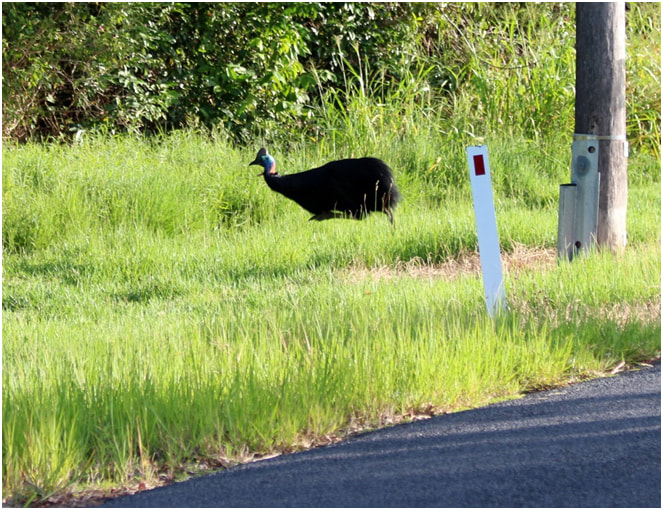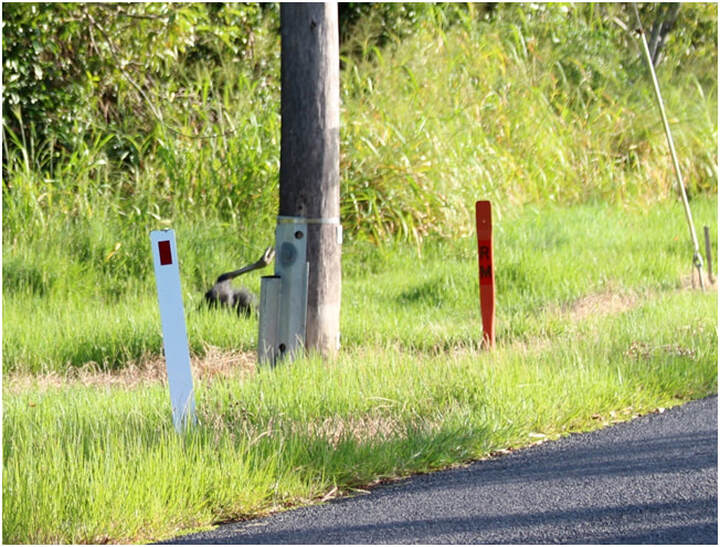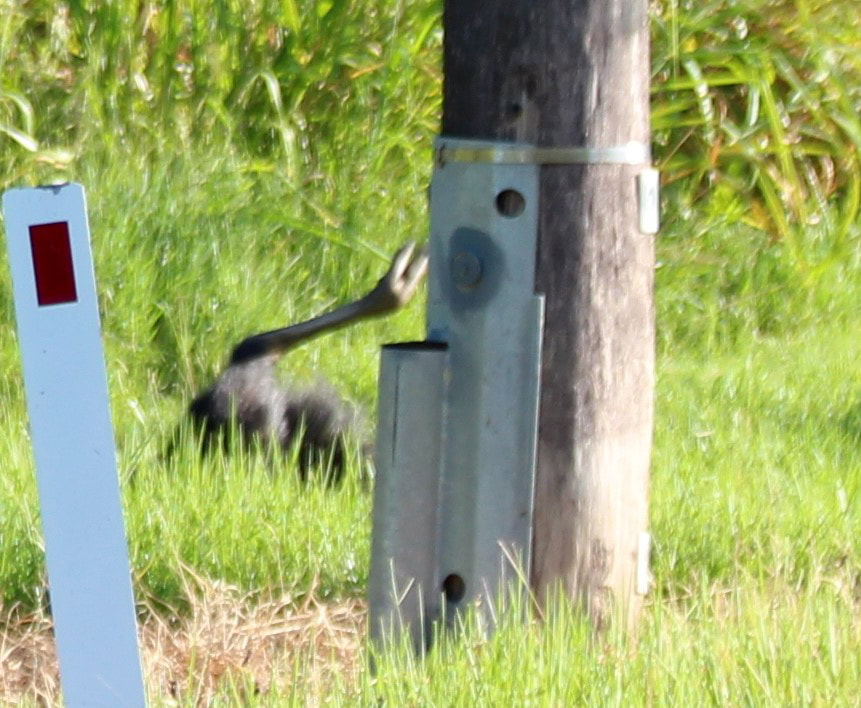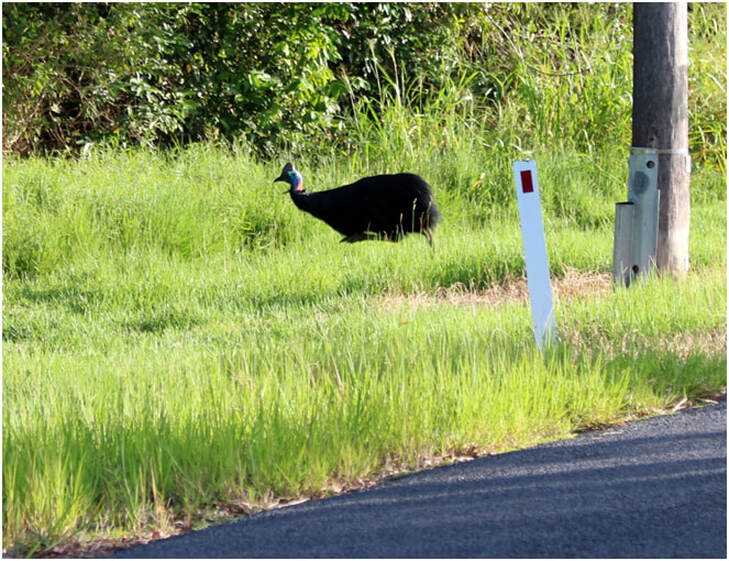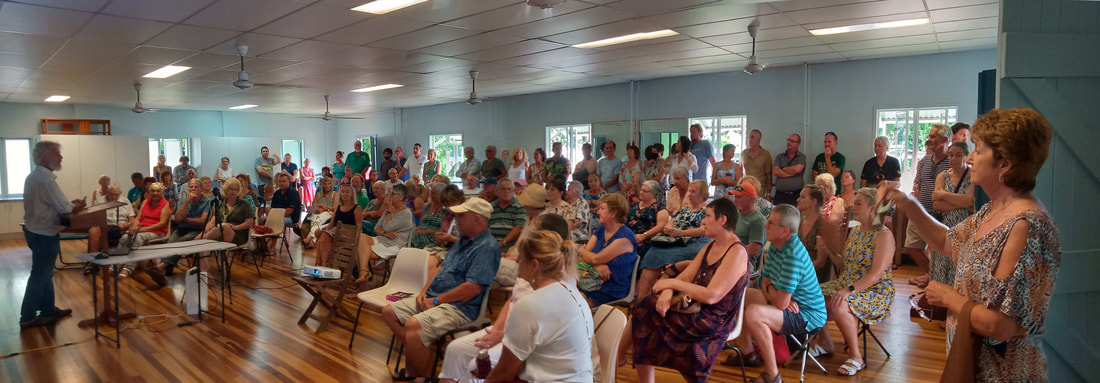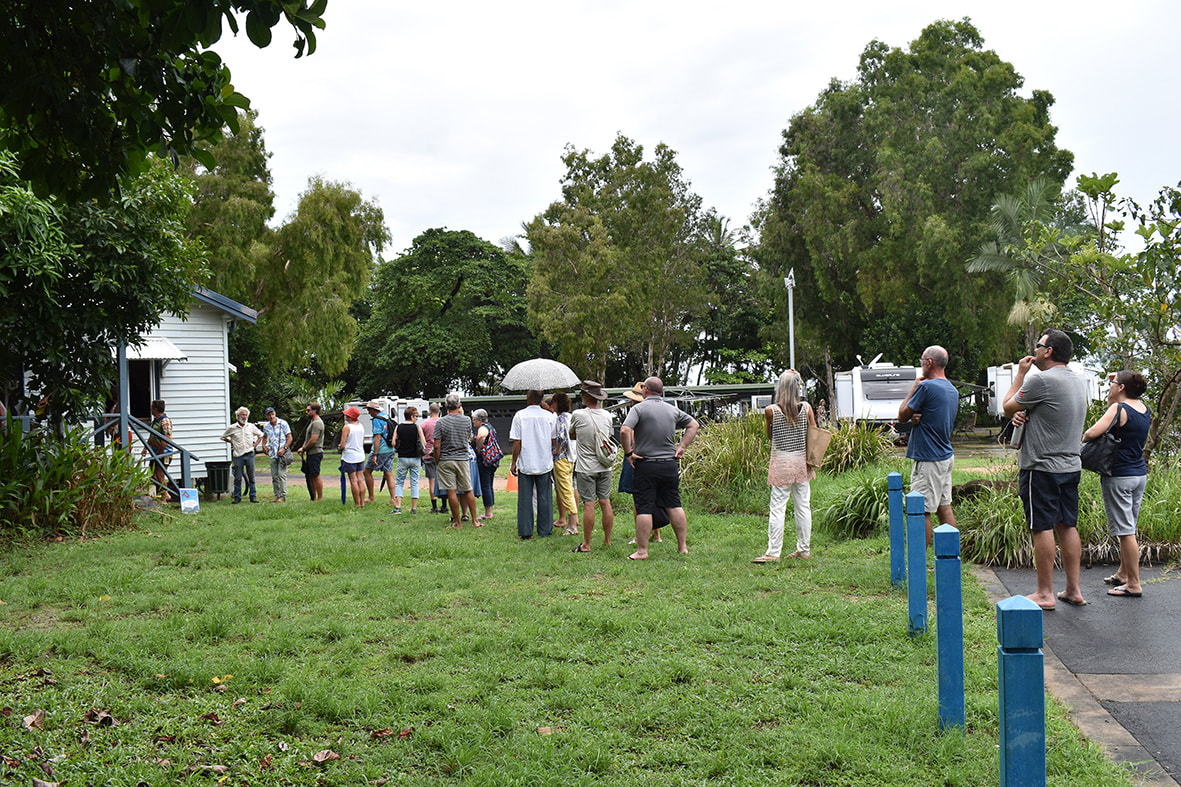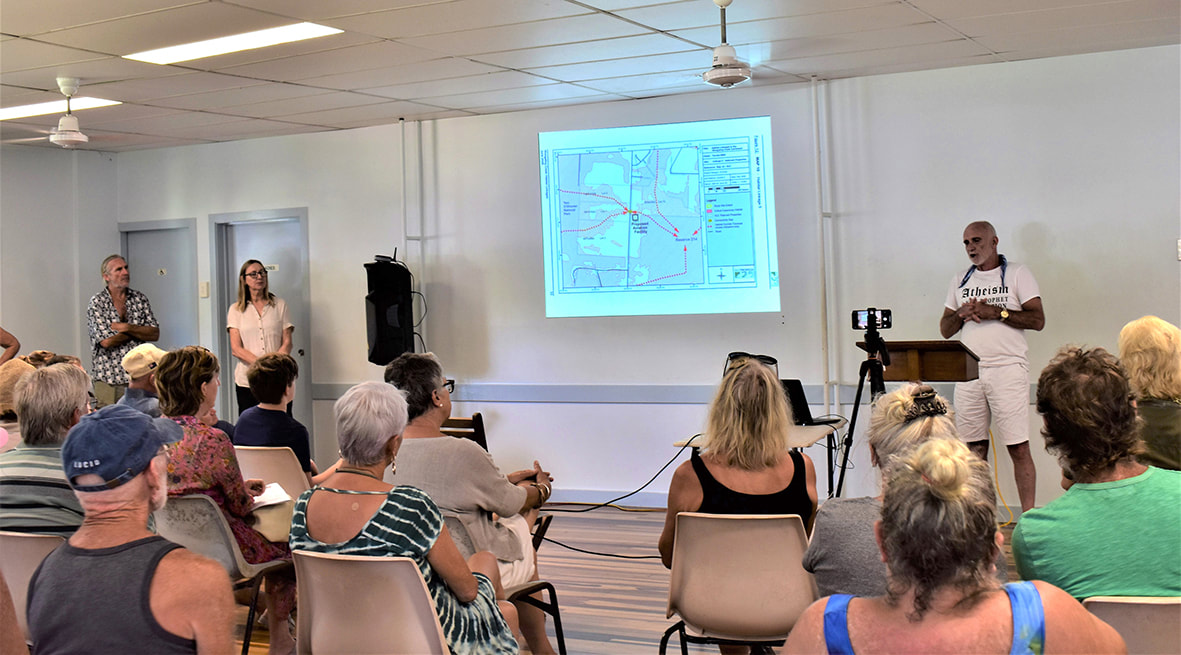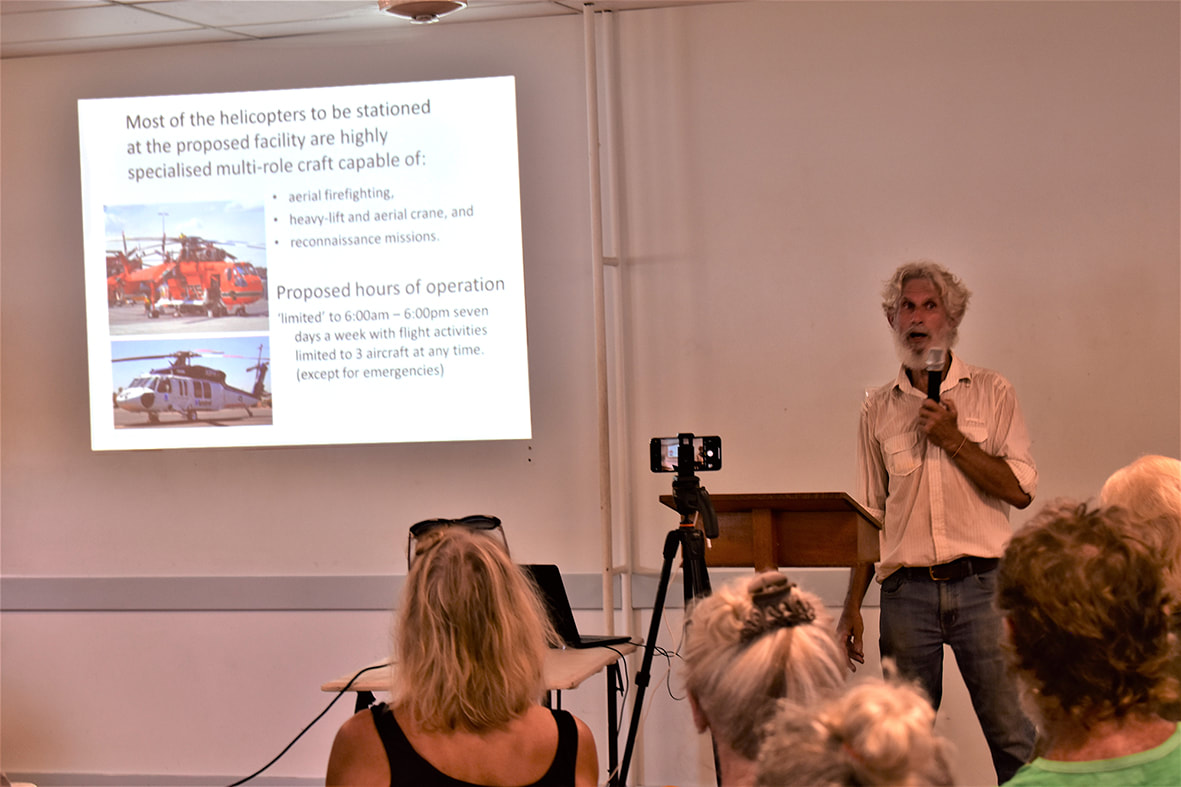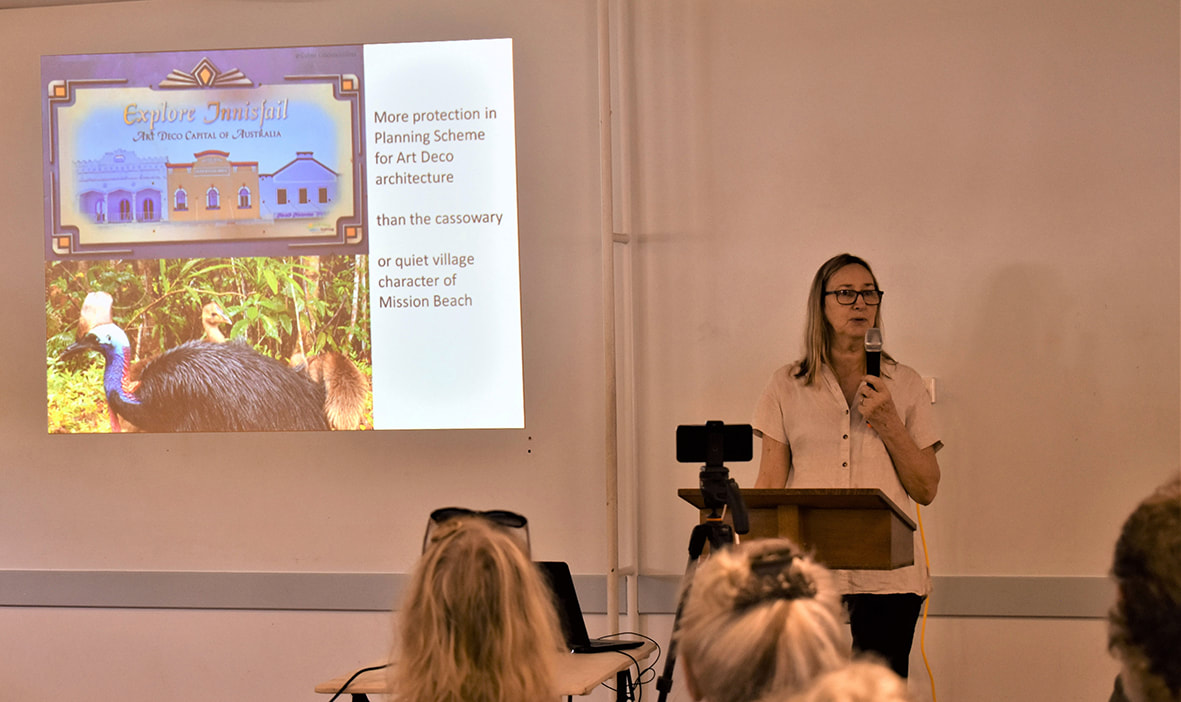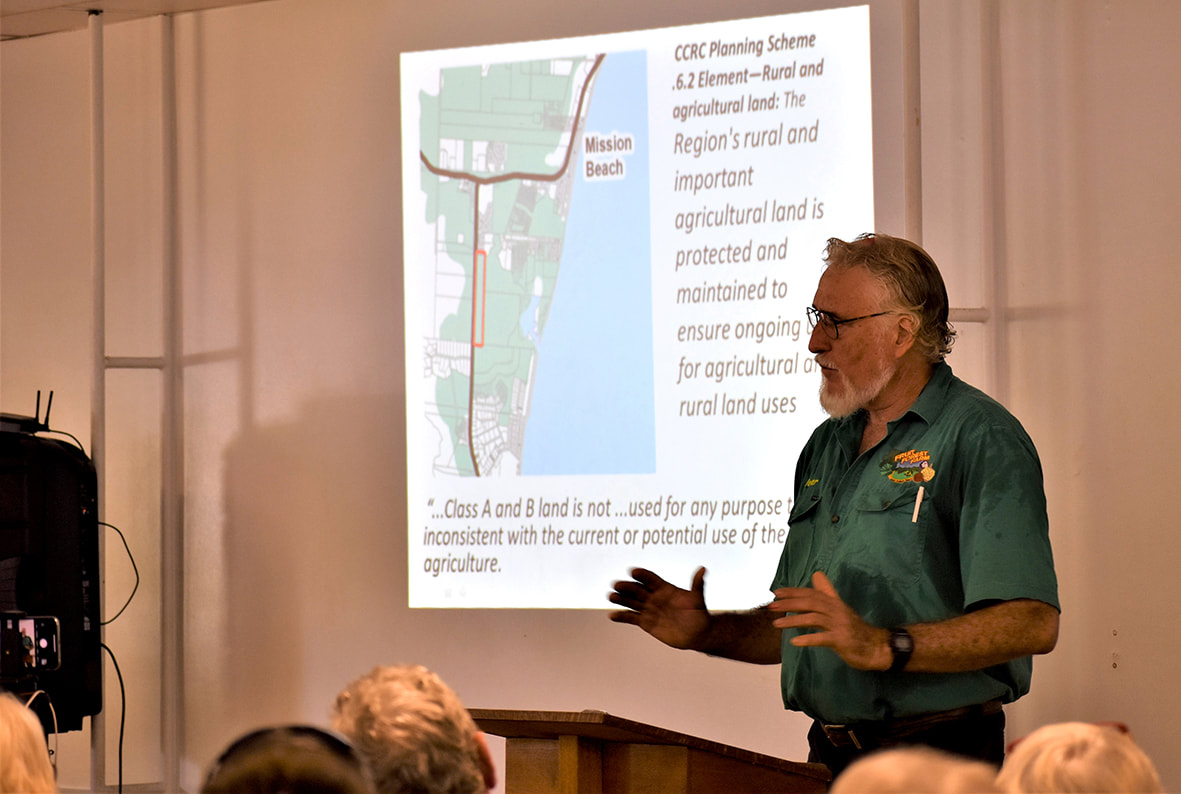| The proposed heliport in Mission Beach, when operating, will create considerable loud noise from the industrial helicopters at irregular times seven days a week, during daylight. The proposed heliport is to be sited among known cassowary corridors (albeit fragmented). Cassowaries are diurnal birds and walk considerable distances in search of food, so anything that disrupts their normal behaviour and movement may have a negative effect. Anthropogenic noise pollution is a relatively recent phenomenon that birds now have to cope with throughout much of the world, and investigators have recently found that responses to this include avoidance of noisy areas, changes in reproductive success, and changes in calls and singing (Ortega 2012). |
Cassowaries’ hearing has not been studied but it is known that they produce very low-frequency sounds as long-distance communication in the forest (Mack and Jones 2003). It is unknown how these sounds travel in a noisy environment. It has been observed that cassowaries respond to helicopter noise in a panicked way – Jeff Larson photographed an adult bird running in fear from a military helicopter flying overhead in Wongaling Beach on 17 April 2014 (2 of the 4-photograph sequence below).
Curator Emeritus, Fishes, Museum and Art Gallery of the Northern Territory, Darwin, NT
Research Associate, Museum of Tropical Queensland, Townsville, Qld
Co-chair, Goby Group of the Marine Fish Red List Authority, International Union for the Conservation of Nature.
Dr Helen K. Larson
65 Reid Road, Wongaling Beach, Qld 4852
Email: [email protected]
Jakob-Hoff, R.1., Kingan, M., Fenemore, C., Schmid, G., Cockrem, J.F., Crackle, A., Van Bemmel, E., Connor, R., and Descovich, K. 2019. Potential Impact of Construction Noise on Selected Zoo Animals. animals 9(8): 1-25.
Mack, A.L. and Jones, J. 2003. Low-Frequency Vocalizations by Cassowaries (Casuarius spp.). The Auk 120 (4): 1062-1068.
Ortega, C.P. 2012. Effects Of Noise Pollution On Birds: A Brief Review Of Our Knowledge. Ornithological Monographs 74: 6–22.
Ware et al. 2015. A phantom road experiment reveals traffic noise is an invisible source of habitat degradation. Proceedings of the National Academy of Sciences 112(39): 12105-12109.
(in litt. J. Larson 7 December 2020).
